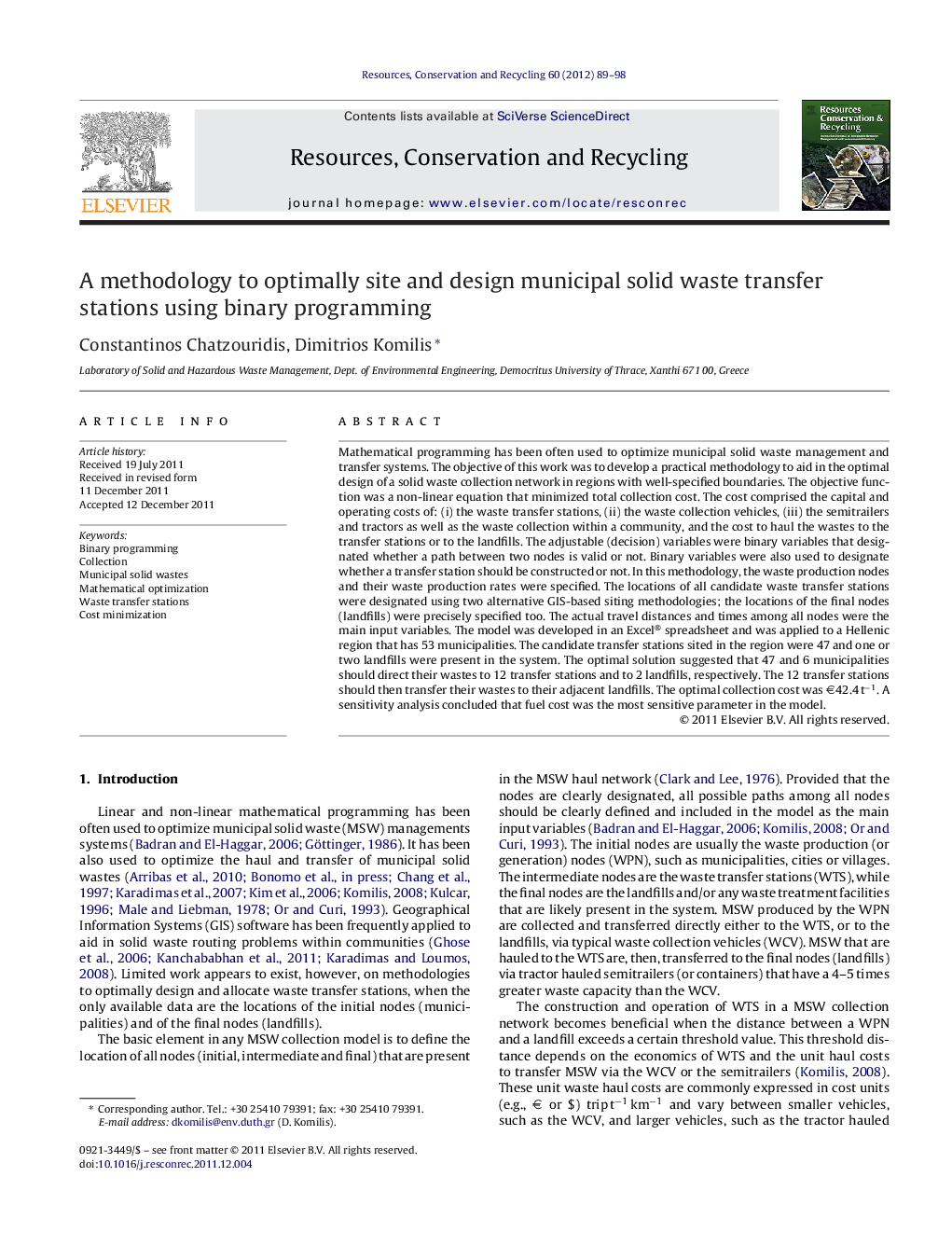| کد مقاله | کد نشریه | سال انتشار | مقاله انگلیسی | نسخه تمام متن |
|---|---|---|---|---|
| 1063314 | 1485729 | 2012 | 10 صفحه PDF | دانلود رایگان |

Mathematical programming has been often used to optimize municipal solid waste management and transfer systems. The objective of this work was to develop a practical methodology to aid in the optimal design of a solid waste collection network in regions with well-specified boundaries. The objective function was a non-linear equation that minimized total collection cost. The cost comprised the capital and operating costs of: (i) the waste transfer stations, (ii) the waste collection vehicles, (iii) the semitrailers and tractors as well as the waste collection within a community, and the cost to haul the wastes to the transfer stations or to the landfills. The adjustable (decision) variables were binary variables that designated whether a path between two nodes is valid or not. Binary variables were also used to designate whether a transfer station should be constructed or not. In this methodology, the waste production nodes and their waste production rates were specified. The locations of all candidate waste transfer stations were designated using two alternative GIS-based siting methodologies; the locations of the final nodes (landfills) were precisely specified too. The actual travel distances and times among all nodes were the main input variables. The model was developed in an Excel® spreadsheet and was applied to a Hellenic region that has 53 municipalities. The candidate transfer stations sited in the region were 47 and one or two landfills were present in the system. The optimal solution suggested that 47 and 6 municipalities should direct their wastes to 12 transfer stations and to 2 landfills, respectively. The 12 transfer stations should then transfer their wastes to their adjacent landfills. The optimal collection cost was €42.4 t−1. A sensitivity analysis concluded that fuel cost was the most sensitive parameter in the model.
► We allocated the maximum number of candidate waste transfer stations using GIS.
► Two different waste transfer station siting approaches were adopted.
► We applied mathematical optimization to minimize total haul cost of the system.
► The non-linear optimization model was developed in a spreadsheet format.
► Results calculated optimum paths among all nodes and designed the transfer stations.
Journal: Resources, Conservation and Recycling - Volume 60, March 2012, Pages 89–98